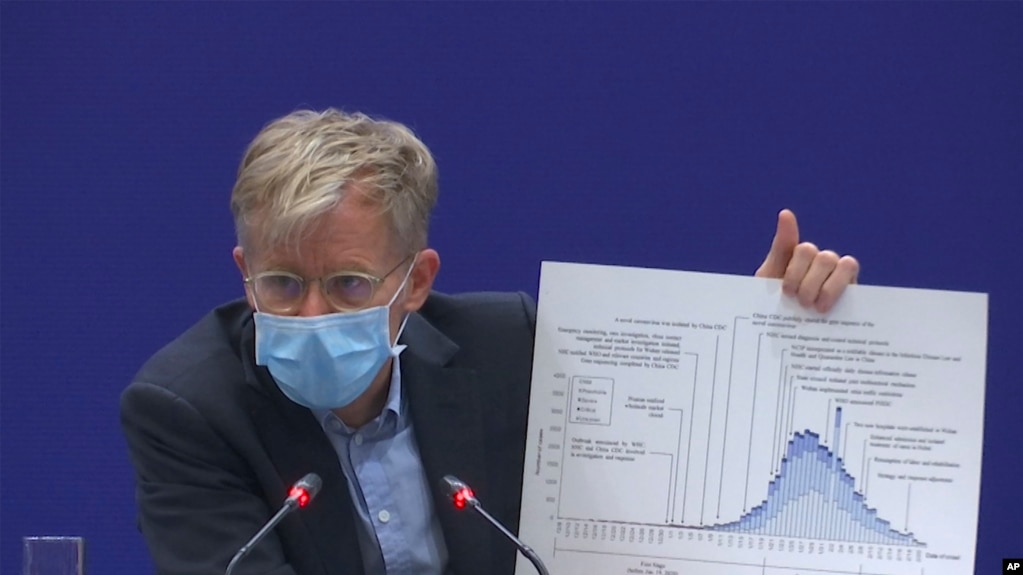
Scientists are not yet able to say how deadly the new coronavirus really is. As the virus spreads around the world, the percentage of patients dying differs from one place to the next, even within China.
Other countries are now facing a growing number of cases of the virus that causes the disease, called COVID-19. Yet a low death rate can still mean a lot of victims. So, scientists are trying to understand why death rates are high in some areas and low in others.
“You could have bad outcomes with this” until health officials really understand how to control the disease, Bruce Aylward warned this week. Aylward is a doctor and a World Health Organization (WHO) envoy who led a team of scientists just back from China.
What do we know about the death rate?
The new coronavirus first appeared in the city of Wuhan, in central China. WHO officials say two percent to four percent of patients there have died. In the rest of China, the rate of death was much lower – only 0.7 percent.
There is nothing different about the coronavirus from one place to another. Instead, the new strain of virus struck Wuhan fast, before anyone knew what the sickness was. Hospitals were quickly over-crowded. In addition, the first patients were very sick before they visited a doctor or hospital, Aylward noted.
By the time people were getting sick in other parts of China, health officials were better able to identify less severe cases. So, there were more known infections for each death counted.
There is no special treatment for COVID-19, but medical care received as early as possible may help. As the danger of the virus became clear, Chinese hospitals moved quickly to admit patients. At first, hospitals admitted patients, on average, about 15 days after they first reported symptoms of the disease. More recently, the wait time has been cut to about three days.
Aylward expressed anger at people who say the death rate is not that bad because of the large number of mild cases.
“Sorry,” he said, “the same number of people that were dying, still die.”
What about deaths in other countries?
Until the past week, most people diagnosed with the virus outside of China had become infected during a visit there.
People who travel a lot are often healthier and may be better able to recover, notes Lauren Sauer of the Johns Hopkins Bloomberg School of Public Health. And as countries began examining returning travelers for the virus, they found infections far earlier.
That is now changing, with coronavirus cases increasing in Japan, Italy and Iran. The death rate outside of China is also rising.
Aylward warned that officials should be careful of “artificially high” death rates early on. Some of those countries likely are identifying the sickest patients first and missing milder cases, just like Wuhan did.
How does COVID-19 compare to other diseases?
A different form of this new virus caused severe acute respiratory syndrome (SARS), a far deadlier infection, in 2003. About 10 percent of SARS patients died.
Influenza is a different virus family. Some forms of the flu are deadlier than others. On average, the death rate from flu is about 0.1 percent, notes Anthony Fauci, head of the United States’ National Institute of Allergy and Infectious Diseases.
That death rate is far lower than what has been calculated so far for COVID-19. Millions of people get the flu every year around the world, leading to hundreds of thousands of deaths every year.
Who is most at risk from COVID-19?
Older adults who suffer from conditions like heart or lung disease are more at risk than other individuals. Deaths are much less common among younger patients, Aylward said.
Some deaths have made news, such as the young Chinese doctor who was punished for talking about the virus publicly when it first appeared. The doctor later died from it.
In China, 80 percent of patients are mildly sick when the virus is found at first, compared with 13 percent who already are very sick.
The sickest to start with are at the highest risk of death, Aylward said. He added that a small number of those with mild infections do go on to die. No one understands the reason.
The World Health Organization says people with mild cases recover in about two weeks. The recovery time for those who are much sicker can take up to six weeks.
Words in This Story
outcome - n. something that happens as a result of an activity or process
envoy – n. a person who is sent by one government to represent it in dealing with another government
strain – n. a group of closely related plants or animals
symptoms– n. a change in the body or mind which indicates that a disease is present
diagnose – v. to recognize a disease, illness,
artificially – adj. not natural or real : made, produced, or done to seem like something natural
calculate – v. to get a general idea about the value, size, or cost